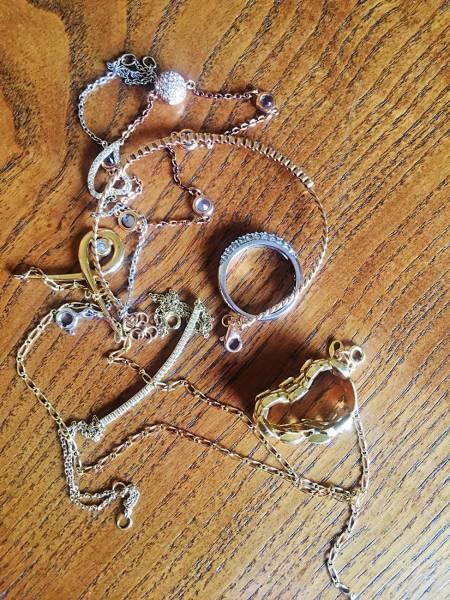The Lebanese are selling off their gold to survive

In the Abou Tarek jewelry store, at the gates of the “goldsmiths’ souk”, in the Barbir district, women scramble to sell their jewelry in exchange for what seems to them much rarer and more precious than gold : real dollars. Social distancing, which should be imposed by the fear of a new peak of the coronavirus, seems very far from the concerns of these customers. "I'm selling my bracelet to pay my credit with Qard el-Hassan," laments Racha (the names of all those interviewed have been changed at their request), a housewife who borrowed money to support her family while waiting for her husband to find a job, and who now has to pay her installments with the Islamic association.
Racha's story is nothing special. It is the lot of almost all those who have passed through the door of Abou Tarek's jewelry store for a few months. "Every time someone comes to my house, I hear the same terrible story: a family living in precarious conditions... A sick relative who requires expensive care... Then, the debts accumulate and the wife, the daughter or sister is reduced to selling her jewelry so that her family can survive…”, says the owner of the place.
Read also: Commodities: the return of gold

Even though the sale of jewelry has traditionally been a women's affair, some men are also beginning to brave their embarrassment of selling the jewelry of female relatives. This is the case of young Malik, in his twenties, who is about to give up one of his mother's necklaces to be able to repair his car. “The price of the spare part I need is in dollars; I have no other way to find it,” he sighs shyly.
"In the societies of the region, especially those where the financial markets are underdeveloped, jewelry functions as a form of savings, a safe haven to be used in difficult times", recalls Wassim Shahin, president of the Middle Eastern Economic Association (MEEA) and Dean of the Faculty of Business at the Lebanese American University (LAU).
Increase in sales
The jewelers in this popular souk in the Barbir district are used to buying and selling. But the number of transactions, “up sharply since the end of the year”, is, for them, the sign of the rapid and violent impoverishment of the population. “I have seen women come and sell their wedding rings to pay for their children’s third term of schooling. For me, this is unheard of!” says one of them. "You don't have to look for noon to 2 p.m. to understand what motivates sellers: unlike gold, dollars can feed children. And so much for the sentimental value! add another one. All these stalls offer immediate payment in “real” dollars, at the black market exchange rate, currently around 9,200 Lebanese pounds per dollar according to Lebaneselira.org. Some shops even offer to come and appraise the pieces at home. This is the case of Saleh Jewelry, based in Rabié, which did not hesitate to buy advertising space on Facebook to promote its “delivery” service.
“Previously, we collected about 20 grams of gold a day. Since the start of the crisis, we have been buying some 300 grams per day at 37-38 dollars per gram,” explains the store manager. He then resells them, around 40 dollars per gram, to traders of precious metals, who are responsible for selling it abroad. Especially since the price of the yellow metal is rising sharply, galvanized by the global epidemic of Covid-19.
Rising gold prices
The ounce of gold thus reached a new record in mid-April, at 1,775 dollars, before falling slightly. On July 2, it traded at 1,772 dollars, an increase of 16.7% since January 1 and 26.2% over one year. Combined, the local crisis and the rise in world prices explain why gold exports have increased by 11% this year: according to customs figures, gold represented 32% (442 billion Lebanese pounds) of total exports in the first quarter of 2020, while the yellow metal totaled only 21% (270 billion Lebanese pounds) of products exported during the same period in 2019.
- Prev
- Next







